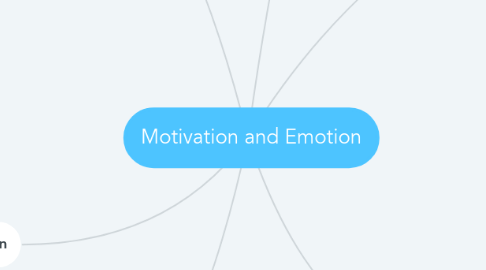
1. Approaches to motivation in everyday life
1.1. Maslow's Hierarchy of Human Needs
1.1.1. self-actualization
1.1.1.1. motivation to develop one's full potential
1.1.2. steem
1.1.3. love and belongingness
1.1.4. safety
1.1.5. physiological needs
1.2. Self-Determination Theory
1.2.1. compentence
1.2.1.1. self-efficacy
1.2.1.1.1. competence to accomplish a given goal
1.2.1.2. mastery
1.2.1.2.1. highly motivated to succeed
1.2.2. relatedness
1.2.2.1. warm relations with other people
1.2.3. autonomy
1.2.3.1. self-motivated
1.3. Intrinsic vs Extrinsic Motivation
1.3.1. intrinsic
1.3.1.1. organismic needs + enjoyability
1.3.1.2. key to achievement
1.3.2. extrinsic
1.3.2.1. incentives (rewards, punishments)
1.4. Self-Regulation
1.4.1. goal setting
1.4.1.1. specific
1.4.1.2. moderately challenging
1.4.1.3. long term purpose
1.4.1.4. short term accomp.
1.4.2. delay of gratification
1.4.2.1. menahan godaan
2. Emotion
2.1. Biological Factors
2.1.1. The ANS
2.1.2. Theories of Emotion
2.1.3. Limbic System: Amygdala
2.2. Cognitive Factors
2.2.1. Two-Factor Theory of Emotion
2.2.2. Cognition or Emotion?
2.3. Behavioral Factors
2.4. Sociocultural Factors
2.5. Classifying Emotions
2.5.1. Valence
2.5.2. Arousal Level
2.6. Adaptive Functions
3. Pursuit of Happiness
3.1. Biological Factors
3.2. Obstacles
4. Theories of motivation
4.1. The Evolutionary Approach
4.2. Drive Reduction Theory
4.3. Optimum Arousal Theory
5. Hunger, obesity, and eating disorders
5.1. The Biology of Hunger
5.1.1. Gastric Signals
5.1.1.1. hunger = stomach contractions
5.1.1.2. hormone cholecystokinin (CCK) = give brain signal to stop eating
5.1.2. Brain Processes
5.1.2.1. hypothalamus
5.1.2.1.1. lateral = stimulating eating (outer sides)
5.1.2.1.2. ventromedial = reduce hunger and restrict eating (inner portions)
5.2. Obesity
5.2.1. The Biology of Obesity
5.2.1.1. genetic component
5.2.1.2. set point
5.2.1.2.1. you make no effort to gain/lose weight
5.2.1.2.2. adipose cells / fat cells
5.2.2. Psychological factors in eating and obesity
5.2.2.1. in past = emotional and food
5.2.2.2. now = time place and sugar fat
5.3. Disordered Eating
5.3.1. Anorexia Nervosa
5.3.1.1. self-starvation
5.3.1.2. anorexia likes to be too thin
5.3.1.3. common with girls
5.3.2. Bulimia Nervosa
5.3.2.1. like normal body shape
5.3.2.2. repeated episodes of overeating (binge eating)
5.3.2.3. cleansing themselves of the food they eat (purging) example: forced vomiting, fasting and excessive exercise.
5.3.3. Causes and Treatments
5.3.3.1. sociocultural factors
5.3.3.2. biological factors
5.3.4. Binge Eating Disorders
5.3.4.1. recurrent eps of eating more food in short period of time
5.3.4.2. 8% are obese
5.3.4.3. diabetes, hypertension, cardiovascular disease
6. Blood Chemistry
6.1. glucose (blood sugar)
6.1.1. in brain and liver
6.2. insulin
6.2.1. carbohydrate
6.2.2. simple sugar
6.3. leptin
6.3.1. decreases food intake
6.3.2. increases energy and metabolism
6.3.3. good for diet
